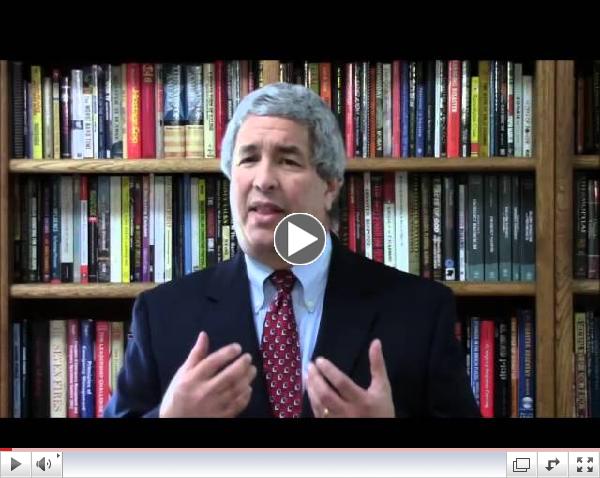|
Exploring Emergency Management & Homeland Security
|

EOC Management Organization
by Timothy (Tim) Riecker
FEMA recently released a
draft Operational Period Shift Brief Template for EOCs, open to public comment. The document is fine, though there was one glaring issue... it assumes an ICS-based model is in use in the EOC.
With the release of the
NIMS refresh, we were given some 'official' options for EOC management structures. Unfortunately, we aren't seeing much material that supports anything other than an ICS-based structure. An ICS-based structure may certainly be fine, but every organization should examine their own needs to identify what works best for them. Story time...
We recently completed a contract that included the development of a plan for a departmental operations center for a state agency. The plan had to accommodate several considerations, including interaction with regional offices and operations, interaction with the State EOC, and integration of a call center. When we talked to people, examined form and function, and looked at fundamental needs, the end result was an ICS-based organization. While accommodations had to be made for translating their own agency structure and mission, it fit rather well.
For a contract we are currently working on, we are developing an EOC plan for a private utility. Again, we reviewed documents, talked to people, and identified the fundamental needs of the company and the EOC organization. The end result is shaking out to be something a little different. At a glance, it's largely ICS-based, but has some aspects of the Incident Support Model, while also having its own unique twists. One particular observation was that their company's daily structure has functions combined that we would normally break up in traditional ICS. Breaking these functions up for an incident would be awkward, disruptive, and frankly, rather absurd. Not only would personnel be dealing with something out of the ordinary, they would be changing the flow of corporate elements that have been placed together by necessity in their daily operations, which would detract from their efficiency during the incident.
My third example is a contract we are just getting started on. This project involves developing an EOC plan for a municipality. While we've had some initial discussions, we aren't sure what the end result will be just yet. The client isn't set on any particular structure and is open to the process of discovery that we will be embarking on. As I've thought about their circumstances and the recent and current work we've done on this topic, there are a few things that have come to mind.
___________________________________________
____________________________________________
Tim Reicker is a founding member, partner and principal consultant with Emergency Preparedness Solutions, LLC, a private consulting firm serving government, businesses, and not for profit organizations in various aspects of emergency and disaster preparedness.
|
|
Bernstein Crisis Management
|
 Are Logical Fallacies Hurting Your Crisis Communications? Are Logical Fallacies Hurting Your Crisis Communications?
by Erik Bernstein
Logical fallacy is a term you hear thrown about a lot, especially if you keep track of politics. Put simply, logical fallacies are errors in reasoning. Though they come in many forms, all logical fallacies are constructed to make it easier to prove your own point while devaluing your opponent's without pesky ol' reality being in the way. Here are a few of the most common logical fallacies:
Strawman
Perhaps the king of logical fallacies, users of the Strawman misrepresent, exaggerate, or straight-out lie about the opposition's argument to make their own point easier to "prove".
Example: After Joe said more funding should be allocated to school lunch programs, Will responded by saying he was surprised that Joe doesn't care about student safety and wants to take money from security budgets.
Ad hominem
This one isn't pretty. Ad hominem fallacies are an attack on your opponent's character or personal traits in order to discredit them.
Example: Following a passionate speech from Frances on improving facilities for the mentally ill, her opponent asks the audience whether they're going to base their decision on input from someone who has been receiving psychological treatment since childhood.
Anecdotal
Though some fallacies are more blatant, this is one that creeps in accidentally all the time. Anecdotal fallacies are just that - they use personal experience, or more frequently an isolated example, to "prove" a point in the face of statistics or scientific measure.
Example: Though economic studies showed plant workers were barely making a living wage as it was, the company CEO repeatedly used the example of Roger, a veteran worker who managed to support his extended family through frugal spending, to rationalize upcoming cuts.
While you're not out there purposely employing logical fallacies for your communications (I hope...), I do see them used unknowingly far too often. Anecdotal fallacies are among the most common, as the folks making difficult decisions struggle to find some example that fits their version of events, but they're far from the only ones. Another terribly fallacy is use of ambiguity, which includes being wrong but counting yourself as "technically right" along with using language that's likely be misinterpreted in your favor.
At their core, fallacies undermine your argument. While using fallacies can pull the wool over the eyes of some they're just as likely to land you in trouble. With audiences today actively looking to criticize and even become outraged over any piece of communication it's simply not worth the risk. Fortunately for you philosophy departments at schools around the country are more than happy to share information about fallacies and how they can be avoided via the web. Get educated, double-check your messaging, and avoid digging the hole deeper when you're trying to climb out of a bad situation.
______________________________________________
Erik Bernstein is Vice President of Bernstein Crisis Management, a specialized firm dedicated to providing holistic strategies for managing crisis situations.
|
|
|
| Loma Prieta Earthquake, 30 Years Later |
This month is the 30th anniversary of the 1989 Loma Prieta earthquake. With a magnitude of 6.9, the earthquake killed 63 people and injured over 3700 others while causing $6 billion in damages, the equivalent of some $13 billion today. Yet, it was not the fabled "Big One" that we expect will happen someday. This documentary provides a good overall picture of the disaster and how people coped with the event. |
The following are excerpts from my blog
Canton on Emergency Management. Please visit my blog to see the rest of my articles.
Killing the messenger supposedly went out of fashion years ago, yet in our stupidity we still attack the powerless representatives of major companies.
|

M
y Blogs
Follow Me
|
|

Welcome to the October edition of edition of Emergency Management Solutions.
Last week, I had the pleasure of attending the annual conference for the California Emergency Services Association. The last day of the conference coincided with the start of major fires throughout the state and many of my friends, old and new, are now fully engaged in relief activities. It's a reminder of how quickly disasters can occur and the need for constant preparedness.
This month, Tim Reicker shares some thoughts on the over-emphasis on the use of the ICS-based model in emergency operations centers. This was also a topic of discussion at the CESA conference and one on which Tim and I are in firm agreement.
In addition, Eric offers his perspective on logical fallacies and how their use can actually undermine the effectiveness of your arguments.
Regards,
|
|
_
________________________________________________
The California Fires and Unintended Consequences
When Good Intentions Go Bad
_________________________________________________
One of the coping mechanisms described in the conflict theory model of decision making formulated by Janis and Mann in their book, Decision Making, is unconflicted change. This is the tendency to carry out a protective action if there are no negative consequences for taking that action. Unfortunately, it's not always easy to see potentially negative consequences and seemingly positive actions often result in unintended consequences.
Mitigating Risk or Protecting Profits?
This is well illustrated by the actions of the Pacific Gas and Electric (PG&E) Company in opting to cut power to areas at high risk of wildfires.
You will recall that in the past two years, PG&E has been found responsible for two of the worst wildfires in California history. The has led to a liability exposure of over $30 billion and forced the company into bankruptcy. In addition, the fires have severely damaged the company's reputation when it was revealed that PG&E continued to post profits and pay dividends despite reducing budgets earmarked for maintenance such as tree-trimming.
______________________________
_______________________
________
If you are having trouble viewing my featured article, try clicking on the link at the top of the page. You can always find my articles in the white paper section of my blog site, Canton on Emergency Management.
|
|
Resources
McAfee Labs Releases 2019 Threat Predictions Report
Although it's not always on an emergency manager's radar screen, cyber security continues is an increasing threat that has major implications for public safety. In this report, McAfee Labs makes predictions as what we might expect in the near future:
- Cybercriminal underground to consolidate, create more partnerships to boost threats
- Artificial intelligence the future of evasion techniques
- Synergistic threats will multiply, requiring combined responses
- Misinformation, extortion attempts to challenge organizations' brands
- Data exfiltration attacks to target the cloud
- Voice-controlled digital assistants the next vector in attacking iot devices
- Cybercriminals to increase attacks on identity platforms and edge devices under siege
You can read the report on the
McAfee Labs website.
PrepTalk Released: David Kaufman's "Our Changing World: The Challenge for Emergency Managers."
David Kaufman is the Vice President and Director for Safety and Security at CNA and previously served as the Associate Administrator for Policy, Program Analysis, and International Affairs
at FEMA. In his PrepTalk, Kaufman takes time to pause, step back, and absorb the big changes occurring across the globe. He explains the evolving trends, where they intersect, and how they will dictate the future of emergency management.
Mr. Kaufman's PrepTalk video and additional resources are available at
www.fema.gov/preptalks/kaufman.
___________________________________
Professional Development Opportunities
Nov. 15-20, 2019
Savannah, Georgia
The goal of the IAEM Annual Conference is to improve knowledge, competency level and collaborative skills. IAEM accomplishes this by attracting relevant high-profile speakers to address current topics and practical solutions.
June 1-4, 2020
Emmitsburg, MD
The 2020 symposium theme is "Imagination, Improvisation, and Innovation in Emergency Management Education."
|
|
 Magnitude 8: Earthquakes and Life Along The San Andreas Fault Magnitude 8: Earthquakes and Life Along The San Andreas Fault
Phillip Fradkin is best known for his excellent book on the 1906 San Francisco earthquake,
The Great Earthquake and Firestorms of 1906, but in this earlier work, he looks at how the lives of Californians are intimately entwined with earthquakes. To understand the cataclysm that is coming, Fradkin believes we must look to the past.
A geologist as well as an historian, Fradkin traces the history of earthquakes in California from the days of the early explorations (with a nod to some of the great earthquakes in Europe) through the Northridge earthquake of 1987. The book is heavy on seismology but includes numerous fascinating stories such as the cover up of earthquake damage following the 1906 earthquake and the complex reactions of survivors of the 1989 earthquake.
Fradkin's book is recommended reading for anyone seeking to understand earthquakes and their effects on the people who live under the threat of constantly moving ground.

______________________________________
|
Emergency Management: Concepts and Strategies for Effective Programs
Second Edition
AVAILABLE NOW!
|
|
Need a speaker for your next conference? I offer keynotes, seminars and workshops.
 |
|
Three Reasons Why I'm the Right Speaker for Your Conference
|
|
|
Speaking Engagements
Learning From The Past: What We Remember, What We Forget
November 19, 2019
Savannah, GA
|
|
| |
|